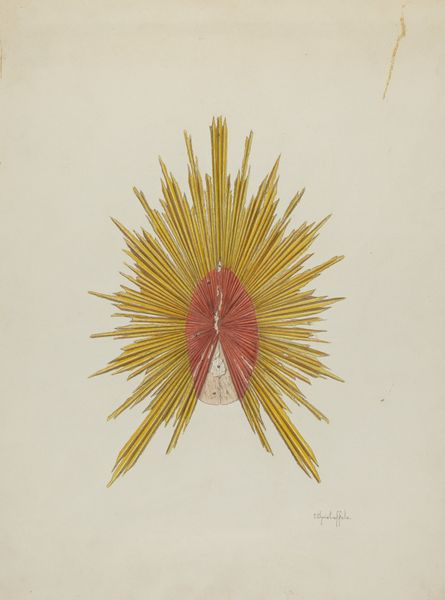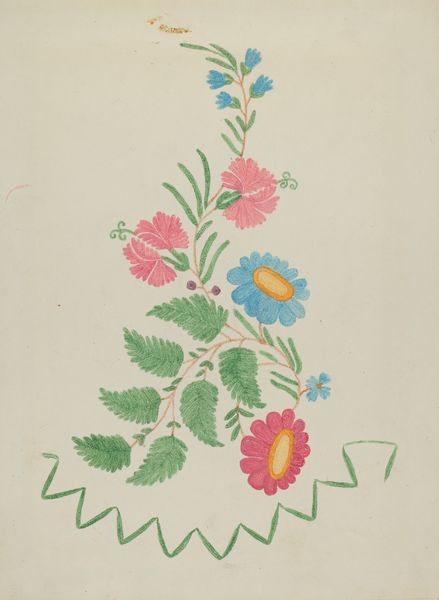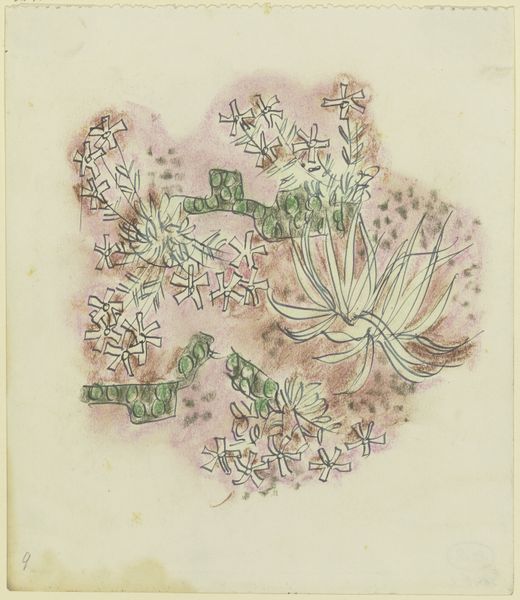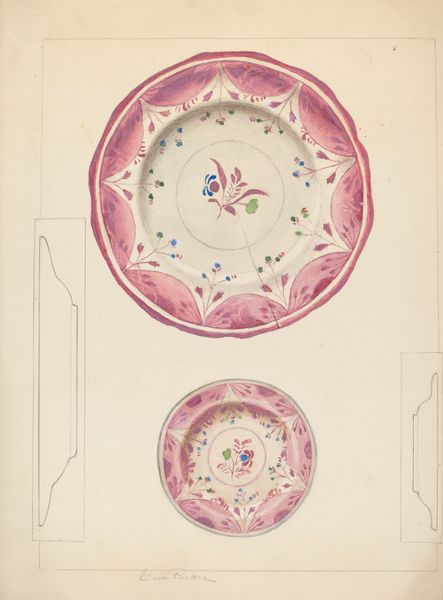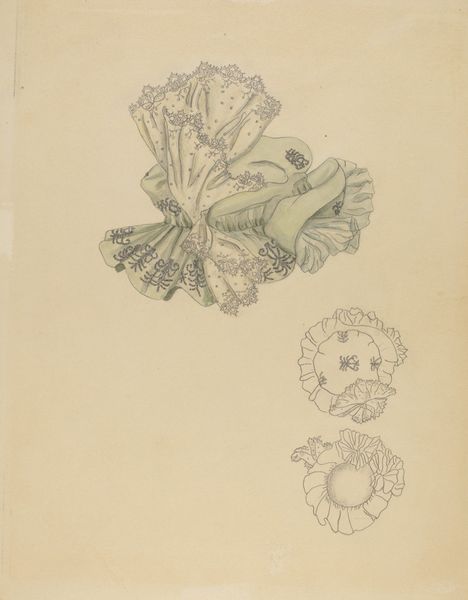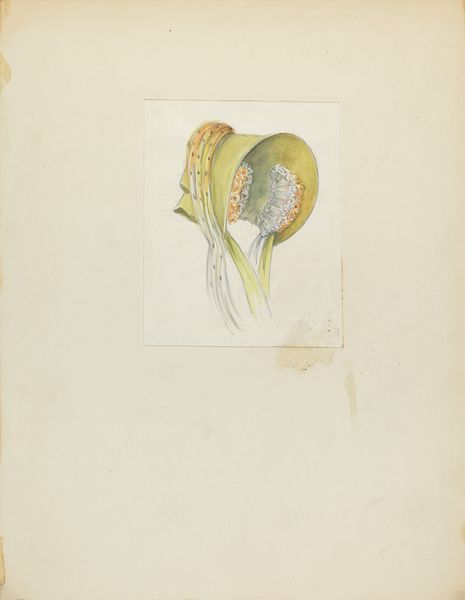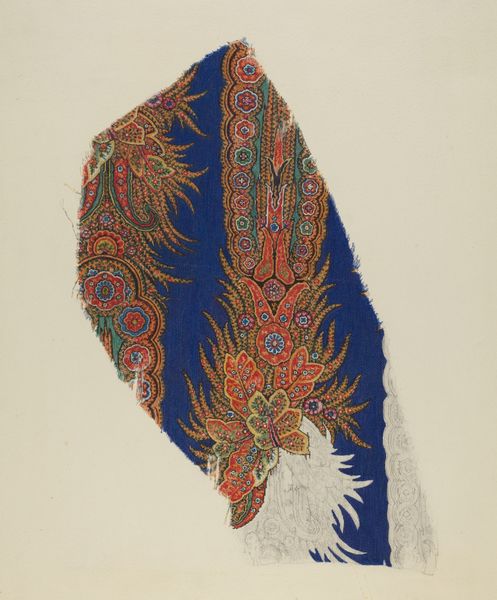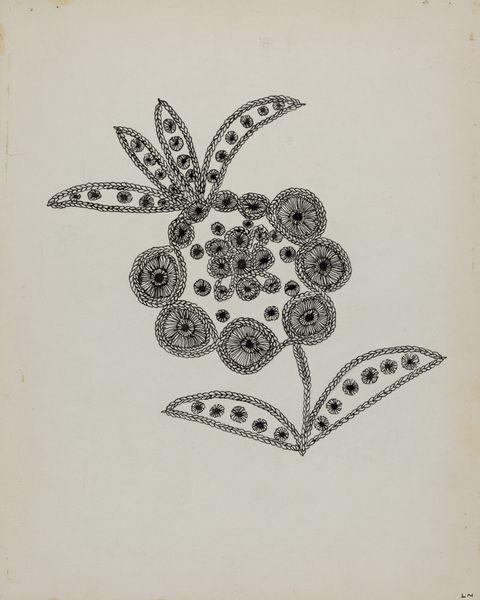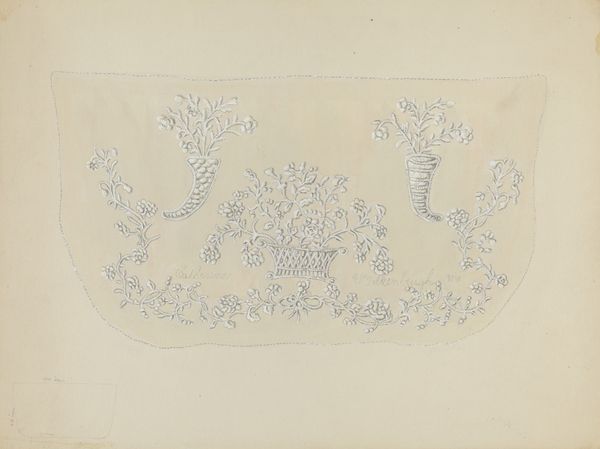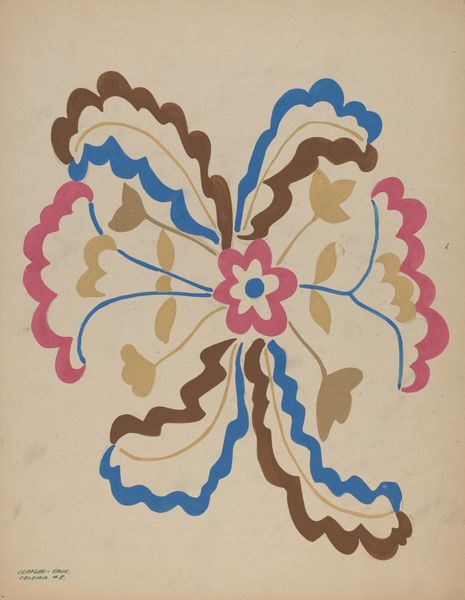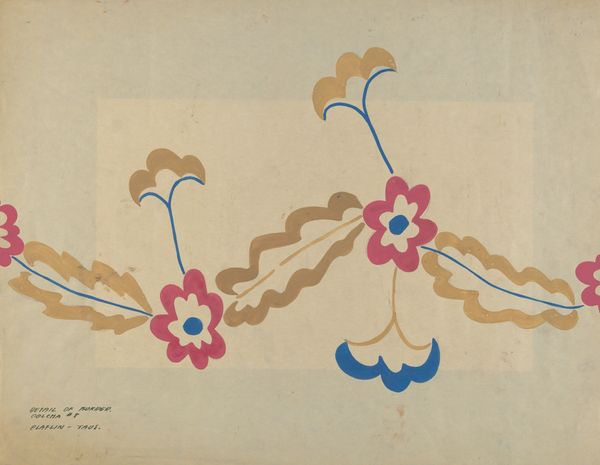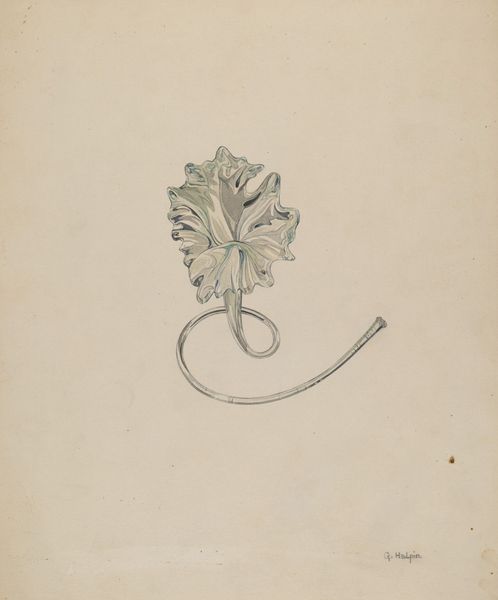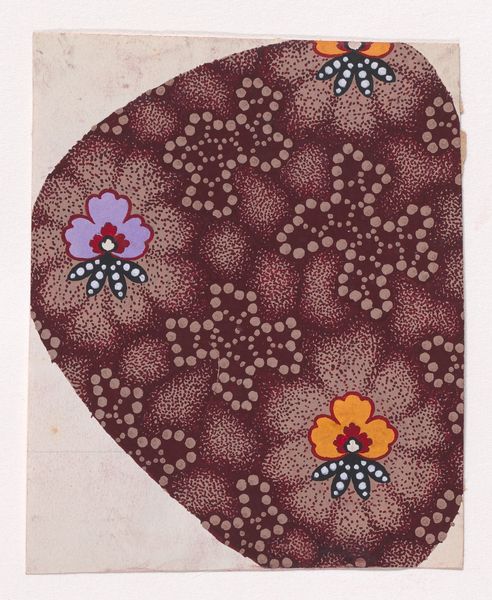
drawing, coloured-pencil, watercolor
#
portrait
#
drawing
#
coloured-pencil
#
water colours
#
watercolor
#
coloured pencil
#
decorative-art
#
watercolor
Dimensions: overall: 35.5 x 27.9 cm (14 x 11 in.)
Copyright: National Gallery of Art: CC0 1.0
Curator: I'm immediately struck by the color palette – this sunny yellow backdrop contrasting with the blue floral motifs feels simultaneously cheerful and delicate. Editor: You’re right, there's a gentleness to it. Let's take a closer look. We're looking at "Collar (For Child)," a drawing executed around 1939 by Ann Gene Buckley. It’s composed of watercolor and colored pencil on paper. Curator: A collar design! Fascinating. Collars throughout history have signified rank, piety, even resistance. Think of Queen Elizabeth I’s ruffs, or the detachable collars of the suffragettes. A child’s collar, though, speaks to something softer - innocence, adornment, belonging to a particular family aesthetic. Editor: Intriguing, to read that societal weight into a child's garment. Structurally, what interests me is the almost abstracted botanical arrangement. The blue petals— are they flowers? Shells? —cascade down a yellow expanse. It’s representational but also pushes towards pattern, design as pure visual pleasure. Curator: Shells would be particularly poignant. The shell represents pilgrimage, protection, even resurrection in some symbolic systems. Placing a child under that kind of visual aegis would be deeply meaningful, maybe unconsciously. Editor: And see how the shapes interact. The scalloped edges of the larger garment form an echo in the individual shells or flowers, a continuous play between line and form. What is also very striking is the way this artist uses colour to fill or shade the blue of these petals in a flat way so it really enhances the whole garment.. Curator: Absolutely, this is not just decoration. I wonder what childhood in 1939 meant— on the cusp of immense historical upheaval. A collar like this might have served as a visual anchor to a time of relative calm. It carries both tenderness and an echo of fragility, which is maybe what gives it the particular emotional tug we feel. Editor: The simplicity of the technique—watercolor and pencil—further underscores that delicacy. Thanks to this visual parsing, this piece invites us to ponder those historical touchstones alongside personal ones and see something altogether new in the design itself. Curator: Yes. And hopefully encourages viewers to examine the subtle emotional language we use to surround and protect our children, consciously or not.
Comments
No comments
Be the first to comment and join the conversation on the ultimate creative platform.
